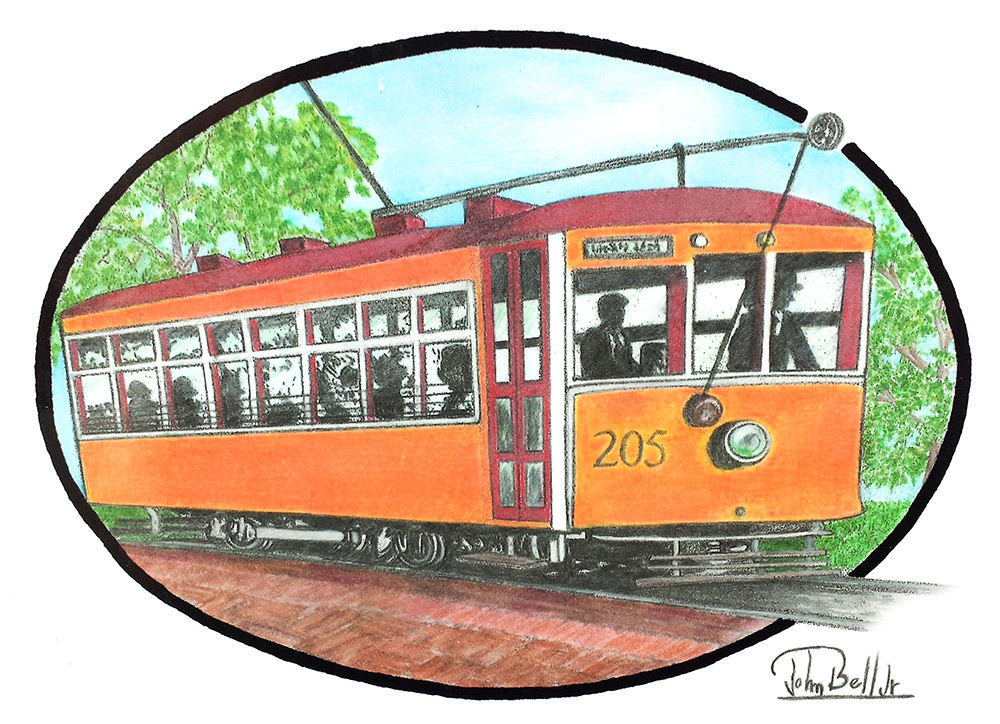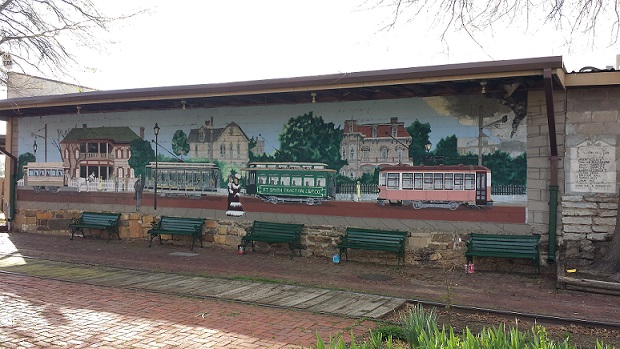
Welcome to the Fort Smith Trolley Museum
Trolley Schedule
Tuesday - Friday: 12pm till 5pm
Saturday: 10am till 5pm
Sunday: 1pm till 5pm
Museum Schedule
Saturday: 10am till 5pm

Tuesday - Friday: 12pm till 5pm
Saturday: 10am till 5pm
Sunday: 1pm till 5pm
Saturday: 10am till 5pm
The Fort Smith Railway Company began operation in 1883 with three mule-drawn rail cars, offering the area's first public transportation. As these cars progressed through the unpaved streets, the "Gee" and "Haw" from the drivers could be clearly heard.
Ten years later, the first electric streetcar service was franchised to the "Fort Smith & Van Buren Electric Street Railway Light & Power Company," and two electric trolleys soon began operation. By 1899, all the lines in Fort Smith were electrified and running with open-platform cars, which made their use dependent on good weather. The riders did have a roof, but the motorman stood outside in the elements, and did the braking by hand.
In 1903, the two above-mentioned companies combined to form the Fort Smith Traction Light & Power Company. Later that same year, the company was reorganized to become the Fort Smith Light & Traction Company.
By 1911, enclosed streetcars had become the norm, since they could run year-round, but they were heavy and created more wear on the tracks. Airbrakes also became standard. The enclosed Birney "Safety Car" made its appearance in Fort Smith in 1920. It was a lighter car with a "dead man control" - designed to stop and open the door if the motorman did not exert downward pressure on the control handle or depress a foot valve. These cars were heated by under-seat electric heaters, assuring comfort in cold weather.
During the 1920's, FSL&T made some poor choices regarding bridge tolls, fare amounts and routes, getting into several legal spats along the way. This, combined with the growing popularity of automobiles and the onset of the Great Depression, took a heavy toll on the company. By 1933, FSL&T was a subsidiary of Oklahoma Gas & Electric and operating at a deficit, though it retained the name Fort Smith Traction. In August of that year, OG&E announced that the streetcars would run make their final run on November 15, and the company would be dissolved.
After the last run, all of the cars were quickly scrapped; motors and wheels were removed for salvage, and bodies sold off and used for assorted purposes. For instance, FSL&T #224, the first car to be restored by the Fort Smith Trolley Museum, spent many years as a diner in Ashdown, Arkansas, with the name "Streetcar Cafe." Within a few years, all 33 miles of Fort Smith's trolley track were ripped up and sold for salvage.

In 1990, local artist John Bell, Jr. designed this mural for the Fort Smith Trolley Museum, and directed a team of his art students in painting it. The mural depicts the 50-year heyday of street railway transportation in Fort Smith, Arkansas, beginning with the mule-drawn streetcars of 1883, on the far left. The second car shown is an open car, in which the motorman stood outside. After that came the semi-convertible trolley and, on the far right, the Birney "safety car," which was used until Fort Smith Light & Traction Co. closed in 1933. Four historical buildings are shown in the background, including Fort Smith's W.H.H. Clayton house (center left) and the Fort Smith Art Center (center right).
In 1991, a tornado tore through downtown Fort Smith, knocking down the concrete-block wall of the building on which the mural was painted. Mr. Bell found a unique solution for reassembling the wall. He numbered each block so that his students could place it in the correct spot. They then touched up the paint, and added a special momento: a small funnel cloud in the top right corner, along with the date '91. In April of 1996, another twister came though "Tornado Alley," destroying many of Garrison Avenue's historic buildings and (minor in comparison) blowing one set of the museum's front doors off their hinges. A '96 was added to the mural to commemorate that event.
The Fort Smith Trolley Museum purchased this building and the property on which it sits in September, 2004. The building has been completely renovated and is now known as the Charles Winters Library. The mural is in need of some tender loving care and refinishing, but has been protected from fading.